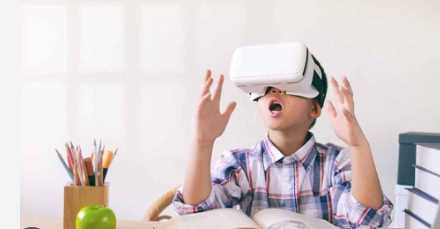A submarine and its crew go through the bloodstream of a scientist to remove a blood clot in his brain in the 1966 movie Fantastic Voyage by shrunk down to the size of a human cell.
The film explores humanity's urge to discover regions that are thought to be inaccessible owing to our physical limits through an intriguing science fiction story. However, elementary school children are now able to accomplish just that because of innovations like augmented reality (AR) and virtual reality (VR).
The Roman Colosseum in antiquity, space, and cellular-level passages within the human body are just a few of the sites students can see today through virtual field trips.
Although many educators see the advantages of virtual reality in the classroom, some are still hesitant to implement it. Various factors include expensive prices and resistance from school administration. Others believe that VR and AR are valuable as entertainment but ineffective as classroom teaching aids.
According to a recent EdTech research, other instructor concerns include the equipment's weight, technical difficulties, and the standard and accessibility of the content. The demand for AR and VR in education is anticipated to increase in the upcoming years despite these obstacles. To understand more about the advantages of virtual reality in the classroom, both practising and aspiring teachers should take the necessary steps.
What Are the Advantages of VR and AR in Education?
Before exploring some of virtual reality's educational advantages, let's first discuss what it is and how it varies from augmented reality. Students can engage in engaging, hands-on learning by using augmented reality (AR) on a smart device to show a layer of educational text and lesson-appropriate content over their actual environment.
An full digital environment is created through VR, giving users a 360-degree, immersive experience that seems real. Students can engage with what they observe as if they were physically present in a VR environment.
Virtual reality in education has many advantages, including the capacity to stimulate students' imaginations and encourage creativity in addition to offering them immersive learning experiences. And this can inspire them to pursue novel intellectual pursuits. Students who struggle to understand complex academic concepts are assisted by AR and VR in schooling.
For instance, with AR, geometry students can examine 3D geometric forms from many angles; they can rotate a shape to observe it from several perspectives, including from the inside. Cultural competence—the capacity to comprehend the culture and values of others—is one of the many advantages of virtual reality in education that extends beyond academics. This ability is crucial in the connected, international world of today.
Education with AR and VR: Resources and Advice
It's not necessary to spend a lot of money to introduce AR and VR products into the classroom. Budget-friendly equipment that connects to smartphones and inexpensive viewers like Google Cardboard are among the resources that are readily available.
Teachers can use apps that are inexpensive or even free, like 360Cities, which lets pupils go to cities like Rome and Tokyo. Students can go to places using the TimeLooper app, which offers tours of historical periods and events like World War II or mediaeval London. Develop lesson plans using VR and AR technologies with the help of platforms like Immersive VR Education and Nearpod.
Make Sure There Is Enough Space
It's crucial for students to use VR equipment securely if they want to profit from virtual reality in the classroom. Many people who utilise VR ignore their immediate surroundings as they whirl around or walk blindly. A slip-up could result in harm.
Teachers need to make sure that their physical classrooms are open and secure for VR explorers. Students should be at least an arm's length apart from one another and from classroom furnishings. Use VR materials that students seated at desks can access when at all practicable.
VR use in classrooms should be moderated and overseen.
According to studies on the psychological effects of VR on students, it should only be used sparingly and with tight supervision in educational settings. Children who misused VR had false memories of having physically visited a place they had never actually been to, according to research findings that were recently featured in a CNN.com piece. This problem can be solved by setting a time limit on VR education sessions and including them into longer lesson plans.
Make a VR learning strategy.
One of virtual reality in the classroom's most notable advantages is its capacity to pique students' interest and curiosity. However, if given free rein, pupils might stray from the subject. Because of this, teachers should create an organised plan to make the most of VR in their lesson plans, and then they should lead their students down that route.




Leave Comment
2 Comments